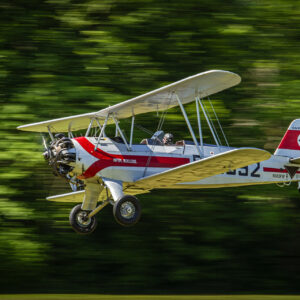The Fw 44 features a fabric covered, steel-tube fuselage with wooden wings, and is powered by a 140 hp Siemens Sh 14 Radial engine. The aircraft were highly maneuverable and would win many aerobatic competitions before WWII in the hands of skilled pilots. It was an Fw 44 being flown by Count Otto von Hagenburg that won the International Aerobatic Competition in Berlin in 1936. Although it was held at the same time as the Olympics, this competition was not part of the Olympic Games.
The Museum’s Fw 44 is an original German built aircraft, WkNr 183 built by Focke-Wulf at Bremen, Germany in 1937. The aircraft wears markings typical to WWII-era Luftwaffe trainers, though it was actually shipped to Argentina before WWII.
Did You know?
The fuselage of the Focke-Wulf Fw 61 was based on the fuselage of the Fw 44. The Fw 61 is considered by many to be the first practical, functional helicopter.
Specifications
- Number Built: approximately 3,000
- Year Produced: 1937
- Serial Number: 183
- Crew: (1) Instructor Pilot, Student Pilot
- Current Pilots:
Dimensions
- Length: 23 ft. 11 in.
- Wingspan: 29 ft. 6 in.
- Empty Weight: 1,246 lbs.
- Loaded Weight: 1,918 lbs.
- Engine: 1x Siemens-Halske Sh 14a-4 seven-cylinder, air-cooled, radial piston engine
- Engine Power: 160 hp
Performance
- Cruising Speed: 107 mph
- Max Speed: 115 mph
- Range: 419 miles
- Ceiling: 12,800 ft
- Rate of Climb: 670 ft./min. initia
Armament
- N/A – unarmed

